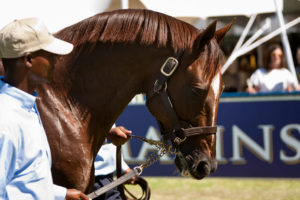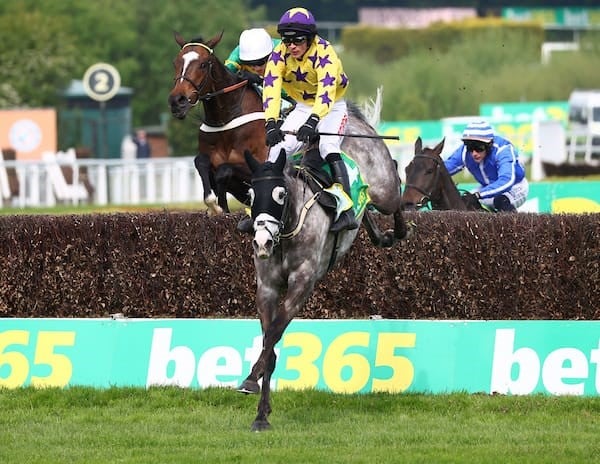A Hibernian sage once wrote that there are three things a man never forgets: The girl of his early youth, a devoted teacher, and a great horse – C.J.J. Mullen
You all know I’m a bit soft in the head when it comes to horses. I grew up on a diet of Anna Sewell, Marguerite Henry and Elyne Mitchell. I graduated to Walter Farley, Mary O’Hara and Dick Francis. The stories may have varied a little, but the horses were always big and brave. The best ones had fire in their hearts and ran like sheet lightning.
The horsey movies of my youth had wonderful slow-motion footage of the hero eating up the turf, or galloping across a beautiful English meadow. The best I’ve ever seen is Francis Ford Cuppola’s The Black Stallion where Alec Ramsay and The Black gallop on the beach. Suddenly the music fades and you are caught up in the rhythmic movement of the legs, those perfect hooves striking the ground, The Black’s mane flowing in the breeze. Alec lets go and throws his hands out, flying aboard his horse….
Sadly, little girls grow up. My freckled hero with the beautiful green eyes grows up to become a truck driver, and Shetan turns out to be Cass Ole from Texas…. But sometimes those childhood ponies and their successors accompany us down the rough and uneven adolescent road and one day we find ourselves alongside something quite different. Our companion is transformed and is suddenly sleek and refined. The courage runs deep and the blood runs blue (and our parents consider it a worthwhile exchange if any of these characteristics have rubbed off in the stable!).
Well, today’s story is about one such horse. It begins on a Karoo farm out near Kimberley, which started life as a remount post for the British army during the Anglo Boer war. Although the noble steeds there are still produced for warriors, their battles are destined to be fought on turf, and their victories measured in stakes money, rather than more grizzly prizes.
It is in this crucible of dust and heat and history that the stars aligned. The Oppenheimers imported a son of Sadlers Wells by the name of Fort Wood. He stood his first season at stud in 1994. Included in his book for that year was a little brown mare called London Wall by Col Pickering. Although London Wall herself was not an outstanding race mare, her dam was a champion sprint mare called Nalatale by Grey Sovereign. In 1995 London Wall produced her 7th foal – a chestnut colt with a splash of white between the eyes, running into a long, thin stripe down to his nose. He would be named Horse Chestnut.
Gavin Schafer, the Maurizfontein stud manager described Horse Chestnut as one of the most balanced individuals he’d ever seen, an opinion shared by Mike de Kock on a visit to inspect the young stock. Mike described Horse Chestnut as ‘a mug’s horse’, meaning that any mug could see he that he was a quality specimen.
Horse Chestnut enjoyed his foalhood in the Karoo and graduated to Mike de Kock’s Randjiesfontein yard as a 2yo. The rest, as they say, is history.
Despite showing a lot of promise at home, there were a lot of nerves and expectations when Horse Chestnut made his debut over 1000m at Turffontein on 20 December 1997. The reputation of the Oppenheimers, Gavin Schafer, Fort Wood and Mike de Kock were riding on the outcome of the race. However, he did not disappoint, changing legs at around the 200m mark and leaving the field floundering in his wake. He romped home, nearly 6 lengths clear of his nearest rival.
Horse Chestnut was less lucky on his second outing, a 1000m Juvenile Plate in March 1998 and was narrowly beaten home into third, but that was the first and last time he would finish behind another horse.
As the winter approached, Mike de Kock moved his string to Natal for the Durban season and sent Horse Chestnut out, almost for fun, in the Natal Handicap over 1200m. Although they’d not really wound him up much for the race, Mike decided that he’d been enjoying himself so much at home that they thought they’d give him a run. And run he did, beating Abernant Star home by 2 lengths. Although Mike de Kock states this as being the least impressive of his victories, he returned from Natal ‘like a lion, ready for action’.
And no truer words were ever spoken. Back in Johannesburg, Horse Chestnut lay waste to his rivals in the Graham Beck Handicap over 1300, winning by a 7 length margin in October 1998.
Mike then tried him over 1600m in the Dingaans a month later. Despite losing a shoe at the start, Horse Chestnut showed his big match temperament by standing like a pro to have it reattached. It was possibly his greenest run, with even the commentator noting ‘Horse Chestnut is all over the place, but he’s sheer class’ as he annihilated the field with a 4.25 length margin.
In 1999, Horse Chestnut started his onslaught on the Triple Crown with an emphatic 7 length victory in the first leg in the Cape Argus Guineas (while stable mate Fort Defiance took the Joburg leg in the Newmarket Guineas, making it a double for the De Kock yard).
There is a saying that your horse can only be as brave as you are and they don’t come braver than Mike de Kock. Despite it not being won by a 3 YO for nearly 50 years, Mike decided to run his 3yo prodigy at the J&B Metropolitan Stakes over 2000m. It was the first time Horse Chestnut had been asked to go such a distance and it is a big ask for any 3yo. I am ashamed to say that standing in the crowds that day, I was by no means convinced either. However, I have never been so glad to be proven wrong. I was there, standing on the rail when he came thundering past. He was so relaxed and moving with such ease, that it looked almost comical to look back and see the rest of the field struggling 8 lengths in his wake. The hairs on the back of my neck stood up. It was unmistakeable – I had witnessed greatness.
While winning races is by no means easy, a horse should be judged on the company he beats. Back in those days, sending horses abroad was nigh on impossible, so Horse Chestnut was touching gloves with the best in the country. Even a cursory glance at his company at the time shows how truly great he was. He beat the likes of El Picha, Classic Flag and Young Rake. And each time he found them wanting.
The second leg of the Triple Crown was the SA Classic over 1800m at the end of March. Horse Chestnut showed his superiority by beating Fort Defiance home by nearly 4 lengths.
The SA Derby, his last race in South Africa, is perhaps remembered as his most impressive victory. It was the longest race of his career at 2450m, but Horse Chestnut simply used it to put more distance between himself and his rivals. His winning margin was an almost ridiculous 9.5 lengths.
Greatness beckoned and Horse Chestnut left our shores for the United States. Despite the new country and a different surface, he took it all in his large stride. His made his American debut in the Broward Handicap in January 2000 and again showed his incredible turn of foot when he crossed the line to thunderous applause 5.5 lengths clear of Isaypete.
An unfortunate injury shortly afterward signalled a disappointingly early end to his American campaign, but Horse Chestnut had shown himself to be a true champion. Not only had he won over different courses, different distances, different surfaces, and different continents, he had also shown that he had the big match temperament to match. In a fitting transition, he joined a long line of racing luminaries, by retiring to stud at Claiborne Farm.
Although Horse Chestnut’s America progeny enjoyed their fair share of success (his America progeny produced 61% winners, and 13% stakes horses, including a G1 winner from his first crop, Lucifer’s Stone), the American market has over recent times evolved to become more focussed on dirt racing. With their primary market being dirt horses and Horse Chestnut’s progeny seeming to favour grass surfaces, the American breeders were reluctant to give him a chance. However, this presented his South African fans an opportunity to bring him home.
Robin Bruss has always been a huge fan and has followed Horse Chestnut’s career as far back as his granddam, who he remembers winning at Gosforth Park. Robin had been campaigning for some time to bring Horse Chestnut home and when the opportunity arose, he grabbed it with both hands. With the support of Mrs Rupert and Drakenstein farm, Claiborne finally agreed to let Horse Chestnut return to South Africa in 2009.
Horse Chestnut showed his remarkable temperament by settling into his new home with little fuss and has made firm friends with the stud’s other resident stallion, Trippi.
There is a notion that you only get one great horse in a lifetime, but as Mike de Kock said, Horse Chestnut is the sort of horse that comes along once in every 10 lifetimes. Simply the name Horse Chestnut is enough to make people nostalgic and he is described in the most glowing terms by absolutely everyone I’ve spoken to. I think one of the most significant reasons that he is considered so special by so many people is that he raced right across the country and so many people had the opportunity to see him run in the flesh. Speaking from experience, it’s not something you forget in a hurry. And everyone who saw him, shares a special camaraderie and admiration for him. He truly was and is, The People’s Horse.
He receives scores of enquiries and visitors and the feeling is very much one of one of our most special children having returned to the fold. Gareth Pepper tells me that the syndicate have tried to keep his stud fee low for this very reason and have been rewarded with bookings from people from all across the country who have a special feeling for this horse and want a little part of him for perpetuity, many of them saying they’d waited for years to have him home again.
Horse Chestnut stood a full book in 2009 with an 80% success rate. His first South African crop were born in 2010 and early reports are that he is stamping them with good, solid bone, very correct front ends, powerful quarters and of course, his wonderful, workmanlike head. The first progeny will go on sale on the 2012 Cape Premier Sale.
I was lucky enough to visit him recently and can report that he has become even more beautiful with age. His coat glistens, and those powerful hindquarters are as impressive as ever. It is quite an experience to stand next to him and simply absorb his incredible energy.
He puts me in mind of one of my favourite recent finds on the internet:-
An English Horse Has Grace
A Western Horse Has Pleasure
But My Horse Has It ALL
Horse Chestnut simply has it all.









